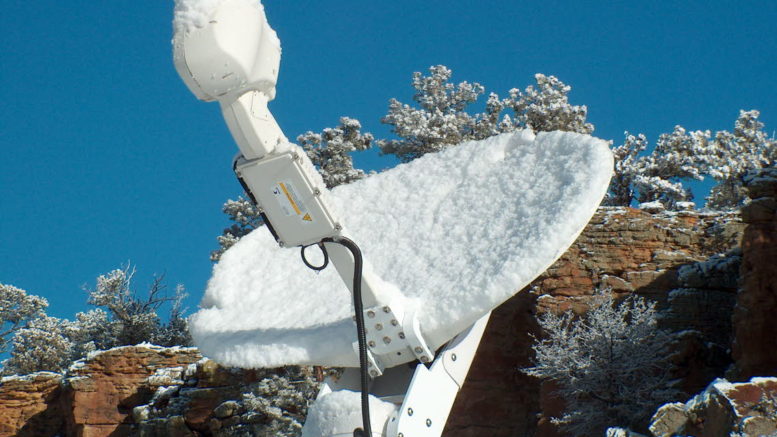Don’t let the snow outside cause “snow” on your TV! Use these three easy winterizing tips for cord-cutters and satellite subscribers.
A fuzzy TV screen is the one type of “snow” no one wants in the winter. Unfortunately, this is what some cord-cutters and satellite TV subscribers will get if they don’t “winterize” their equipment. Yes, we’re well aware that winter is here, but there’s still time to protect your TV antenna connections and/or your satellite dish from the effects of snow. As I write this, it’s a sunny 40-degree Fahrenheit in Novi, Michigan. A day like this one is ideal for anyone to do the winterizing tasks we’re here to discuss.
Cord-Cutters, This Tip is for You!
If you have an outdoor TV antenna you bought from us, you might think you’re good to go for the winter. While the antennas we sell are sturdy, there are certain precautions you must take to keep getting optimal reception during the next few months. The good news is that winterizing your antenna – actually, it’s your antenna connections, but we’ll get into that below – is rather easy to do.
While your TV antenna can withstand some snow, you should be concerned about your coax connections. These are anywhere the coax cable connects to your TV equipment outside the house or in the attic. These need to be weather-proofed with something called weather boots. These are rubber or plastic covers that easily fit over the connector. If you don’t have these boots, get them. And if the boots you have are cracked or peeling, get new ones. It’s that simple.
Satellite TV Subscribers…
…If there are snow and ice on your dish, there’s you could have “snow” on your TV screen. You don’t want to spend the winter dealing with spotty reception. But you can’t got outside every day to brush the snow from your dish. Well, you can, but you’ll get tired of doing this after a few days. Fortunately, we have a convenient way to keep snow and ice off your dish.
This dish heater is the perfect solution for satellite TV subscribers in the “snow belt.” Its easy peel-and-stick installation is something that anyone can do, even those who are technologically challenged like me. Once you attach it to your dish and plug in the power supply, you’re done. The heater automatically turns on just above freezing temps, and it turns off when the dish surface is warm. Meanwhile, you and your family remain inside, enjoying all your favorite programming.
Other Winterizing Tips for TV Lovers
This next tip is for cord-cutters AND satellite TV subscribers. It’s basically for anyone who’s mounted an antenna – yes, a satellite dish is also an antenna – on their roof. Any time you drill a hole in your roof, you run the risk of letting water into your home through the tiny holes. A set of pitch pads can help to create a water-resistant seal around those holes, which helps prevent leaks and damage.
If you’re concerned about your installation, you could always go up on the roof and reattach your antenna with pitch pads. There’s only one problem: It’s December and you’re probably already getting snow. I wouldn’t recommend ANYONE getting up on their roof on snowy days. It’s too cold to be outdoors, and the dangers of slip-and-fall accidents are through the roof. (No put intended.) So, what do you do?
Well, like I said earlier, it’s a sunny 40 degrees here in Michigan. (That could change in a matter of hours.) If I needed to get up on the roof to install some pitch pads, today would be the day to do it. You’ll never see me tromping around on my roof after the temperatures drop and the snow starts blowing. So, if you think you need pitch pads, it’s best to get them now and install them on the nicest and SAFEST day. Or better yet, pay an installer to do it.
Before You Do Anything…
…It’s best to check with your friends here at Solid Signal. Seriously, folks. We’ve helped thousands of cord-cutters and satellite TV subscribers with their installations and equipment maintenance. Here on the Solid Signal blog, we have plenty of white papers and installation tips. If you have a specific question, it’s best to post it on the Support from Solid Signal Facebook page. And if you have questions about the specific products mentioned in this post, call Solid Signal at 888-233-7563. You can also fill out the form below and send it to us.





